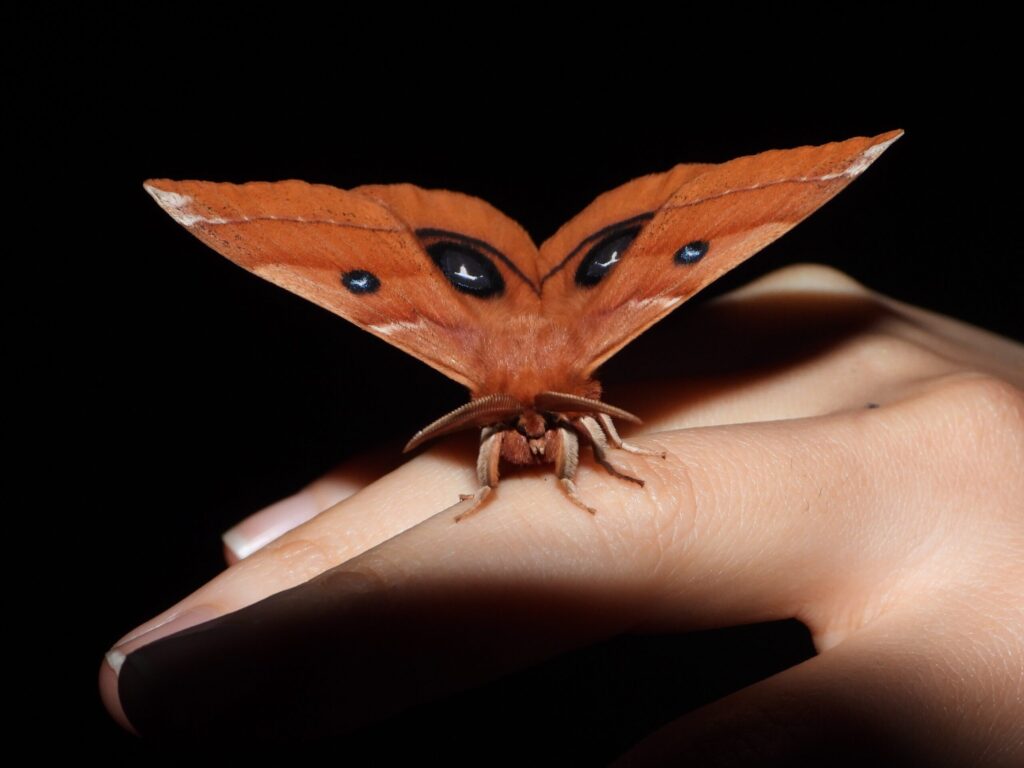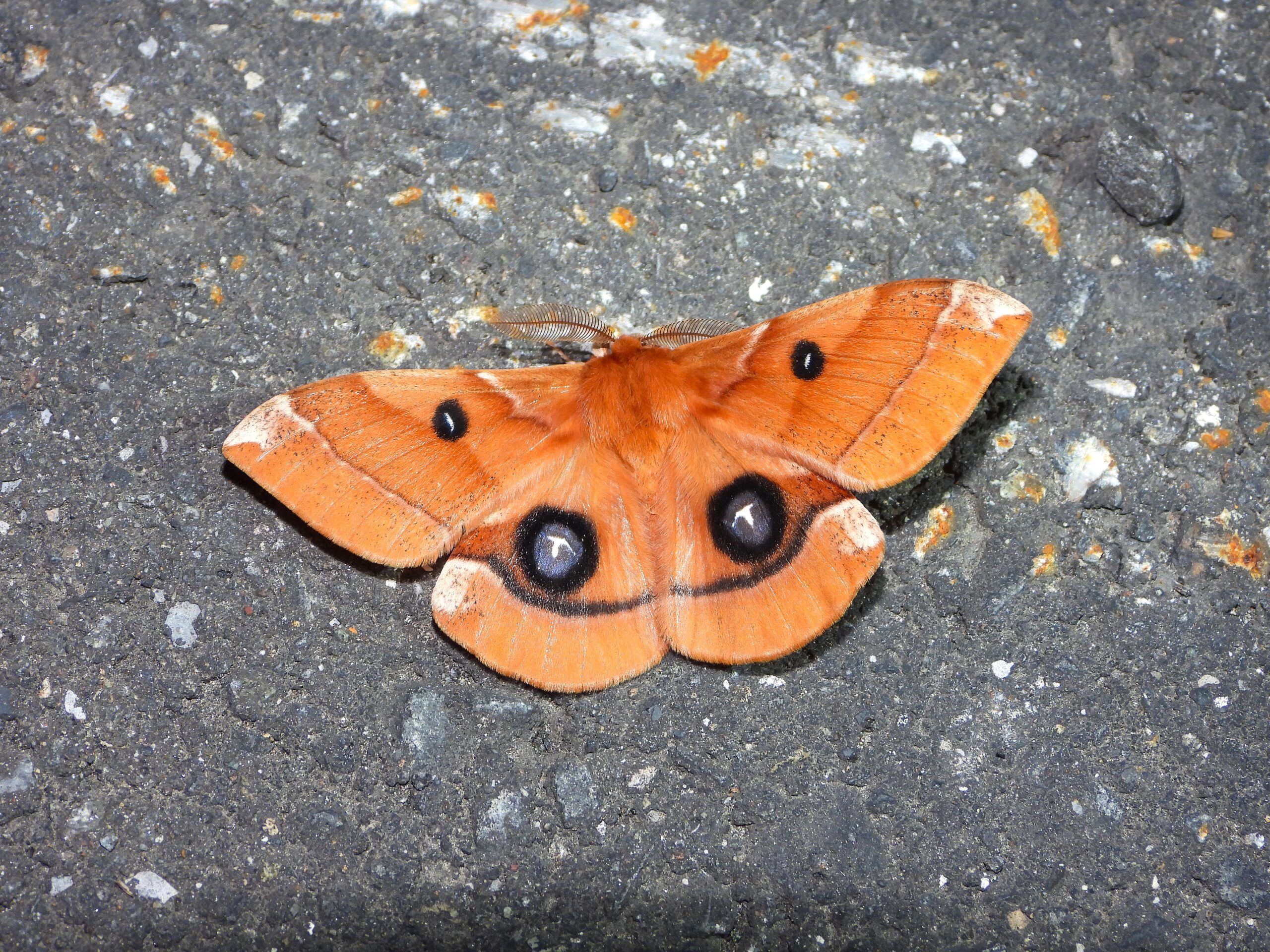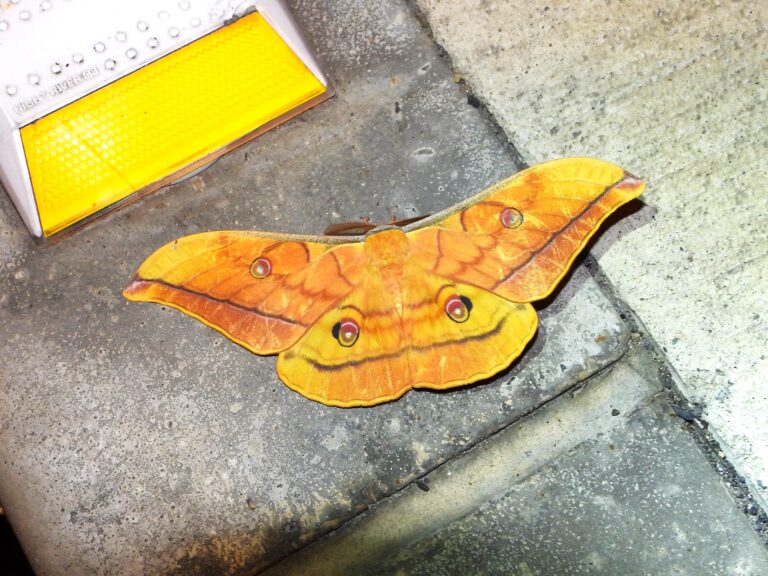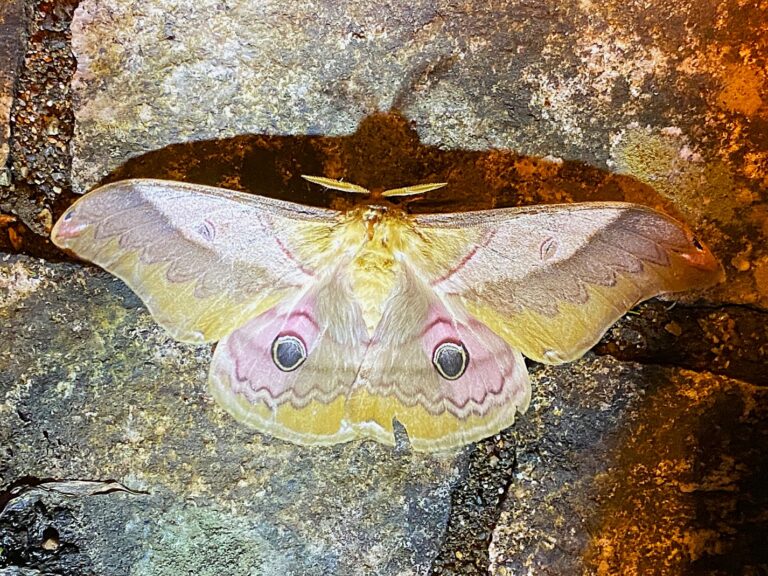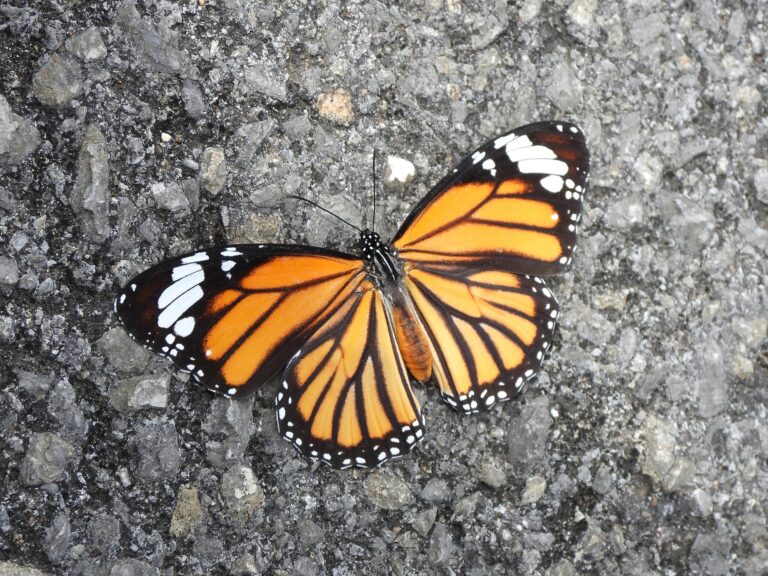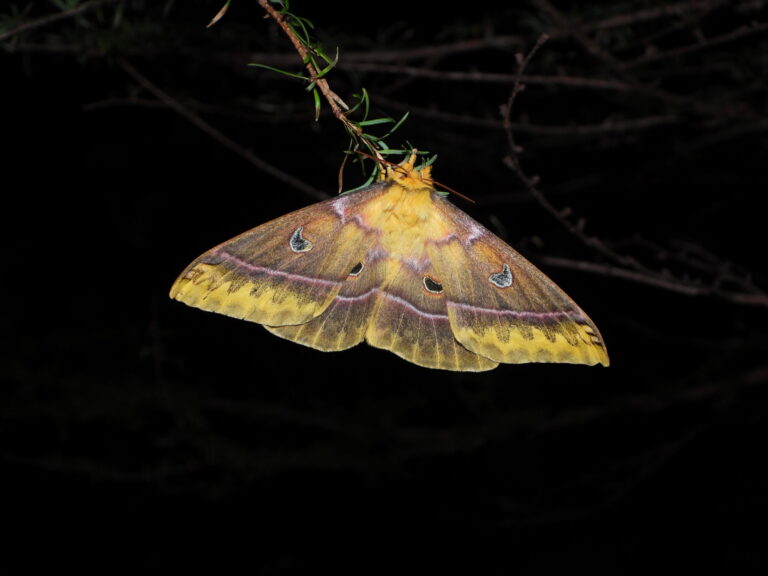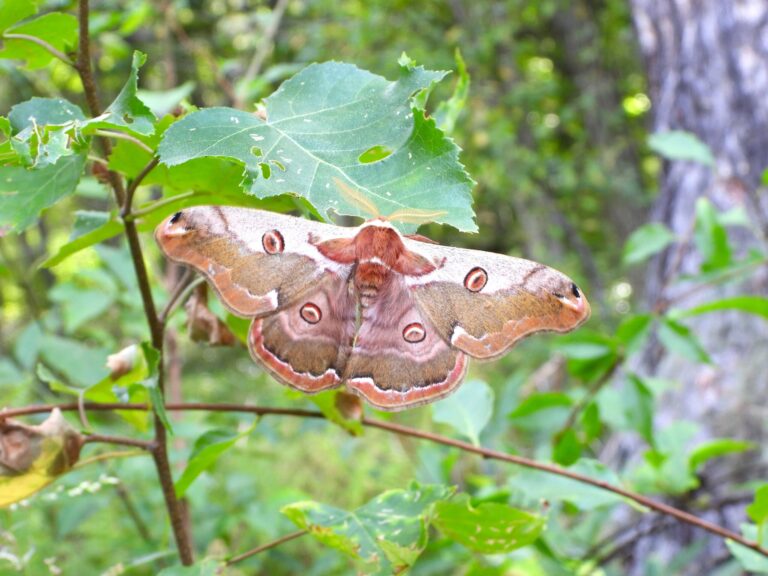Japanese Tau Emperor (Aglia japonica) – Wildlife of Japan
Introduction
The Japanese Tau Emperor (Aglia japonica), known in Japan as Ezoyotsume, is a striking spring moth belonging to the family Saturniidae. With its vivid orange-to-rust wings and a brilliant blue eye-spot on the hindwings, this species emerges early in the year in Japan’s mountainous broad-leaf forests. Encountering it in the wild is a special moment for nature observers.
Appearance
Adults have a wingspan of about 7–10 cm, with females slightly larger. The wings are reddish-orange to rust-brown, more vivid in males, and the hindwings bear a beautiful blue-tinted eye-spot. Males have feather-like antennae, while females’ are simpler. The larvae are green and feed on broad-leaf trees such as Corylus, Carpinus, and Betula. Adults do not feed and have a short lifespan.
Habitat & Distribution
This species occurs throughout Japan—from Hokkaido to Kyushu—and also in the Russian Far East. It inhabits mountain and hilly broad-leaf forests, especially those with birch, oak, or hornbeam trees. Adults appear from March to June depending on latitude and elevation, peaking in April and early May.
Where to See in Japan
It can be found in mountain forests across Honshu, Shikoku, and Kyushu. In Hiroshima Prefecture, it has been recorded in broad-leaf forests around the university campus. In northern regions such as Aomori’s Shimokita Peninsula, emergence occurs later due to cooler temperatures. The best time to observe is around dusk in April and May, using light traps along forest roads.
Behavior
Adults are nocturnal and often come to light soon after sunset. Males are more often attracted to light than females. They are univoltine (one generation per year). Larvae feed during spring and summer, then pupate in leaf litter or soil. The pupae overwinter, and adults emerge the following spring.
Diet
Larval host plants: Corylus, Carpinus, Betula.
Adults: Do not feed.
Reproduction
Adults emerge in spring, mate soon after, and females lay eggs on or near host plants. Larvae feed for several weeks before pupating and overwintering until the next spring. Detailed field observations on egg-laying and pupation sites remain limited.
Conservation
The species is not currently listed on Japan’s national Red List. It remains locally common in well-preserved mountain forests. Conservation of these broad-leaf habitats and avoiding collection are important for maintaining healthy populations.
Author’s Impression
Finding the Japanese Tau Emperor in the forest always makes me feel that spring has truly arrived. The beautiful blue sheen of its eye-spots is unforgettable, and unlike many other saturniid moths, it sometimes rests with its wings closed — a posture that gives it a calm, almost butterfly-like appearance. Seeing one quietly perched in the cool mountain air is a sure sign that nature is waking up again.
